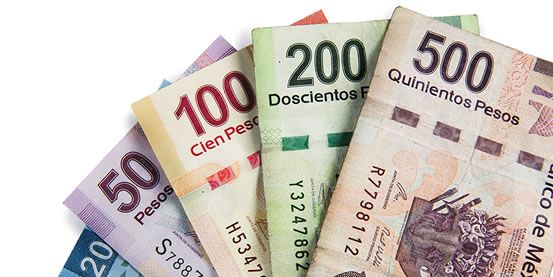The peso starts the session with few changes compared to Friday’s close, showing an appreciation of 0.04% and trading between a minimum of 19.9131 and a maximum of 19.9569 pesos per dollar.
In the foreign exchange market, the dollar weighted index shows a decline of 0.05%, while most of the currencies in the wide basket of main crosses remain stable, due to the low liquidity in the market.
In the United Kingdom the financial markets were closed for the Spring Bank Holiday, while in the United States the capital and bond markets will also remain closed for the commemoration of Memorial Day.
Likewise, in the raw materials market, a reduced volume of operations is expected due to reductions in operating hours of various commodities on the Chicago Mercantile Exchange and the London Metal Exchange (LME).
Nor will relevant economic indicators be published today, so market movements will depend mainly on adjustments in local portfolios at the end of the month.
Volatility in financial markets and the exchange rate is likely to remain low for the remainder of the session, particularly after 11:00 am, following the close of the European markets.
Regarding indicators, in China the official PMI indicator for May was published, which stood at 51 points, down 0.1 points compared to April.
For its part, the PMI indicator for services rose from 54.9 to 55.2 points, indicating a recovery in the services sector in that country.
The mexican peso
In Tuesday’s session, the global publication of the manufacturing and service sector PMI indicators for May will be relevant, as they will provide information on the evolution of the economic recovery in the fifth month of the year.
In the United States, the most anticipated indicator for the week is the non-agricultural payroll for May published this Friday, where the market anticipates that around 650 thousand job positions have been created.
The publication of México of remittances at 9:00 am this Tuesday will be key, as well as the survey of specialists from the private sector of Banco de México, while at 12:00 pm the IMEF indicator of May.
For its part, on Wednesday June 2 at 12:00, Banco de México publishes its quarterly inflation report, where an upward adjustment is anticipated in its economic growth and inflation expectations.
For its part, the Ministry of Finance (SHCP) published on Friday afternoon the public finance figures at the end of April, showing a real increase of 2.4% in total budgetary income in the accumulated from January to April, compared to the same period last year.
This growth is due to a 64.8% increase in public sector oil revenues, while non-oil revenues show a 3.4 percent drop.
Within non-oil companies, tax revenues in the first four months were 2.8% lower than those of January-April 2020, with decreases in the three main taxes: ISR (-1.8%), VAT (0.2%) and IEPS (- 13.2 percent).
However, tax collection in the period was 0.3% higher than expected by the program thanks to an over-collection of 47.4 billion pesos (13.7%) of VAT.
On the other hand, non-tax income shows a surplus of 101,678 million pesos (151.9%), equivalent to 5.2% of the total budgetary income programmed for the period.
Government expenditure
On the expenditure side, the budget exercised in the first four months amounts to 2,132 billion pesos, of which 1,609 billion correspond to programmable spending.
Programmable spending, on which the government has influence, showed a real growth of 9.7% compared to the same period last year, with an increase of 6.6% in current spending and 24.0% in capital spending.
However, within the latter, spending on physical investment has remained low, with a real decrease of 3.2% despite an over-exercise of 17.7% in this item.
At the end of April, a primary balance surplus of 52.9 thousand million pesos was obtained, however, the Financial Requirements of the Public Sector (RFSP) register a deficit of 219.4 thousand million pesos, with which the Historical Balance of the RFSP amounts to 12.3 billion pesos (49.5% of GDP according to first quarter figures).
The decrease of 93 thousand million pesos in the SHRFSP compared to last month is the result of a lower balance in the external debt, due to the slight appreciation of the peso during the month.
The SHCP estimates that the level of debt at the end of 2021 will be 51.4% of GDP, which would be a decrease of 0.9 percentage points compared to the level at the end of 2020.
During the session, the exchange rate is expected to trade between 19.89 and 20.06 pesos per dollar.
The euro starts the session with an appreciation of 0.06%, trading at 1.2199 dollars per euro, while the pound loses 0.03%, reaching 1.4184 dollars per pound.
Money market and debt
In Mexico, the yield on the 10-year M bonds remains unchanged at a rate of 6.65 percent.
Derivatives market and the peso
To hedge against a depreciation of the peso beyond 20.50 pesos per dollar, a purchase option (call), with an exercise date within 1 month has a premium of 1.15% and represents the right but not the obligation to buy dollars in the aforementioned level.
On the other hand, the interbank forward for sale is at 19.9933 at 1 month, 20.3427 at 6 months and 20.8196 pesos per dollar at one year.
Gabriela Siller; PhD
Director of Economic-Financial Analysis.
Banco BASE
![]()

